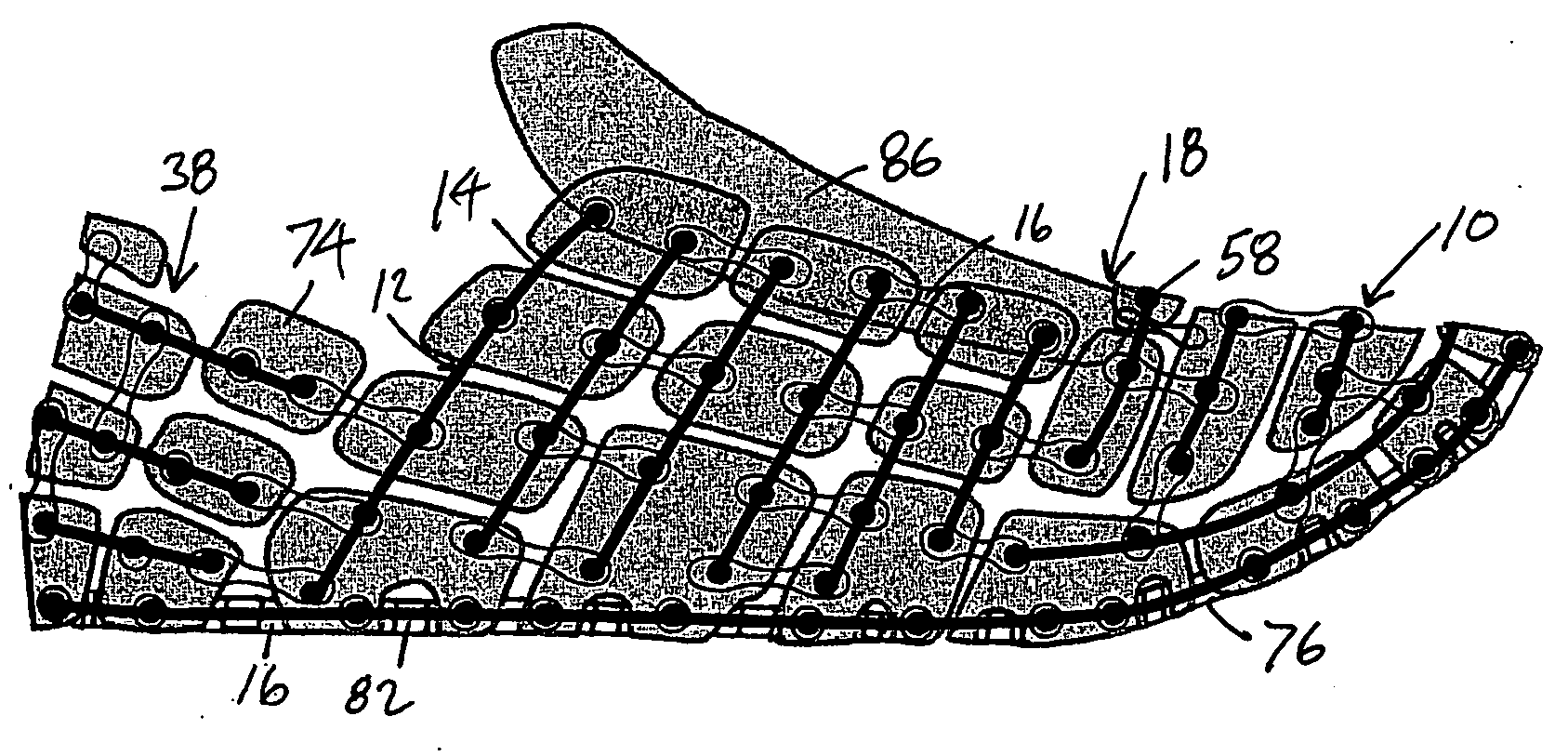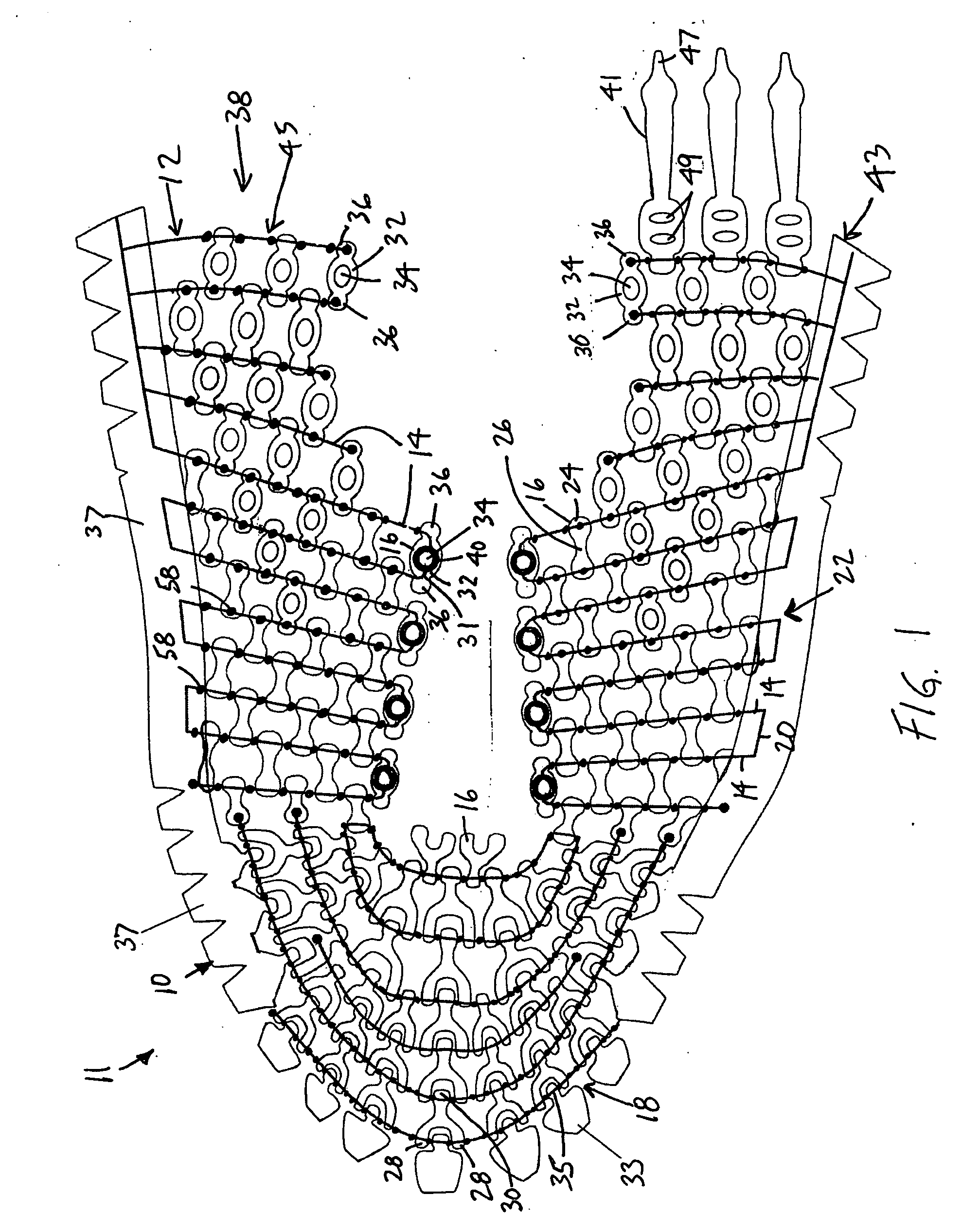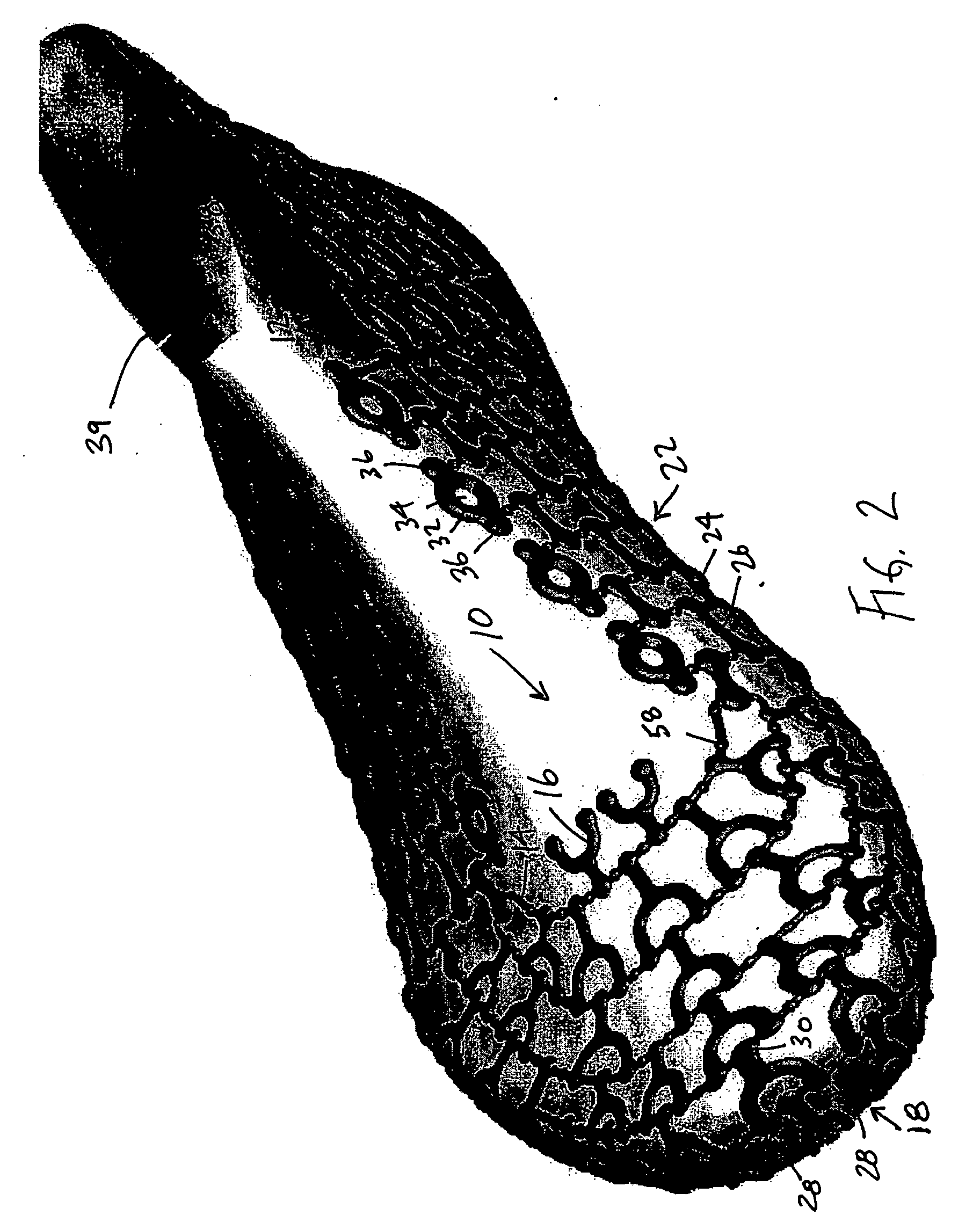Article of footwear formed of multiple links
a technology of multiple links and articles, applied in the field of articles of footwear, can solve the problems of difficult to solve unraveling problems at the edges of woven materials, lack of conformability and flexibility of solid leather shoes, and laborious and therefore expensive creation of articles of footwear produced with woven materials, etc., and achieve the effect of saving labor and difficulty in threading individual links onto a frame matrix
- Summary
- Abstract
- Description
- Claims
- Application Information
AI Technical Summary
Benefits of technology
Problems solved by technology
Method used
Image
Examples
Embodiment Construction
[0041] The present invention may be embodied in various forms. A preferred embodiment of an upper 10 of an article of footwear 11 is shown in FIGS. 1-2. Upper 10 is formed of a frame 12 comprising a plurality of elongate members 14. A plurality of links 16 is secured to frame 12. Elongate members 14 are formed of a first polymer while links 16 are formed of a second polymer. The sole assembly of footwear 11 is not shown in this figure, however, its construction may be similar to that of upper 10 and comprise a plurality of links 16 secured to a frame 12. A sole assembly is illustrated and discussed below in connection with FIG. 11. In other embodiments, upper 10 could be secured to a conventional sole assembly.
[0042] Frame 12 is preferably formed of a resilient polymer having a high tensile strength, e.g., at least approximately 6,000 PSI. In a preferred embodiment, the Modulus of Elasticity of the first polymer forming frame 12 is approximately 50,000 PSI to 800,000 PSI. The first...
PUM
| Property | Measurement | Unit |
|---|---|---|
| Shore hardness | aaaaa | aaaaa |
| shape | aaaaa | aaaaa |
| thickness | aaaaa | aaaaa |
Abstract
Description
Claims
Application Information
 Login to View More
Login to View More - R&D
- Intellectual Property
- Life Sciences
- Materials
- Tech Scout
- Unparalleled Data Quality
- Higher Quality Content
- 60% Fewer Hallucinations
Browse by: Latest US Patents, China's latest patents, Technical Efficacy Thesaurus, Application Domain, Technology Topic, Popular Technical Reports.
© 2025 PatSnap. All rights reserved.Legal|Privacy policy|Modern Slavery Act Transparency Statement|Sitemap|About US| Contact US: help@patsnap.com



